What is copyright & how effective is copyright protection?

What copyright is, the protection it provides, fair use, copyright registration and law.
Copyright basics: what is copyright, copyright law, fair use and copyright registration for protection of intellectual property. How to enforce copyright of digital works without legal fees.
Copyright, with all of its caveats, misconceptions, and regional variations, is not an easy topic to get your head around. You doubtless will have heard authors and artists throwing around terms like “fair use”, “statutory damages”, and “copyright registration” with little context or explanation. This blog will attempt to demystify copyright basics – what copyright is, what it does and doesn’t provide, and how it protects your intellectual property and artistic works.
 What is copyright and what does copyright protect?
What is copyright and what does copyright protect?
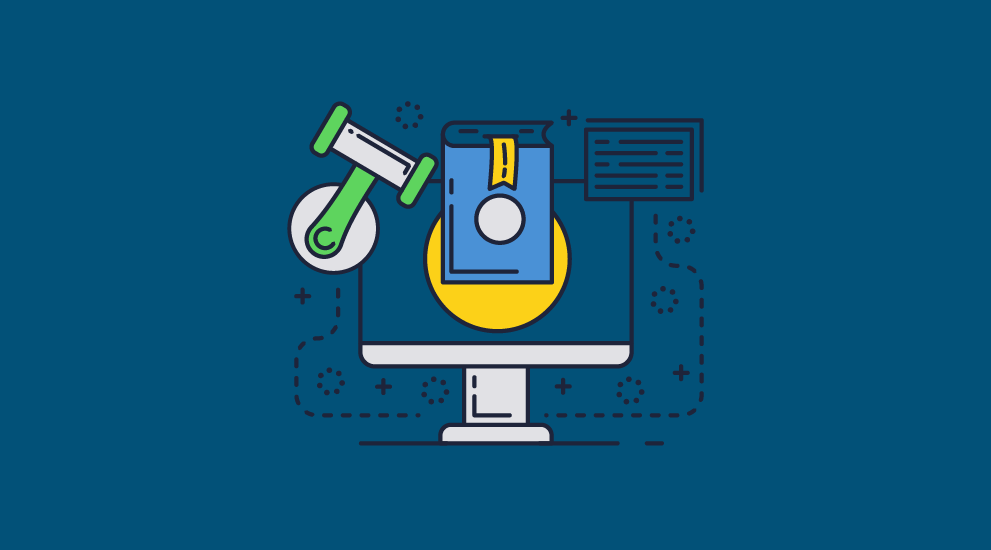
Copyright is a legal right that grants the author of an original creative work the exclusive right to copy, distribute, reproduce, display, adapt, or perform it. Unlike trademarks or patents, copyright is not something that you need to apply for. It applies to your work from the moment it can be perceived, reproduced, or communicated for more than a short time.
The exact wording of the above definition is important. For copyright to apply, works must be creative: a name, slogan, concept, system, etc. does not fall under copyright. They must also be original works of authorship, not a copy or slight variation of an existing work. And finally, in the United States, you must have “fixed” the work, for example by writing it down, taking a photograph, or recording it. A melody you composed in your head does not have copyright because it is not in a tangible form. Nor would a public performance of that song from memory to a live audience. However, if you were to note down the music or record it (i.e a music video or audio file), it can qualify for copyright protection.
Whether or not a work has copyright is not always straightforward. Examples that spring to mind include ice sculptures, fireworks displays, the arrangement of food on a plate, or an AI-generated image prompted by a user. It is ultimately the legal system that decides whether a work meets these criteria if it is tested in court.
Though you have a legal copyright by default and can send DMCA takedown notices, in some countries (such as the US), you must register your copyright to pursue legal action.
 What is the purpose of copyright?
What is the purpose of copyright?
Copyright law gives creators exclusive rights to control the use and distribution of their work and to receive compensation for its use. As the creator of those works, you have the right to determine how it is used, reproduced, and distributed. Copyright also gives you the power to license your work to others and collect royalties for its use.
For example, let’s say you are a musician and you create a new song. Copyright law would give you the exclusive right to control how that song is used, such as whether it can be played on the radio or used in a movie. You could also license the song to other artists or companies and receive payment for its use.
 How long does copyright protection last?
How long does copyright protection last?
The length of copyright protection varies from country to country. In the US, the general rule is the life of the author plus an additional 70 years. However, there are exceptions to this. For example, if you publish a work created anonymously, pseudonymously, or for hire, copyright protection lasts for 120 years from creation or 95 years from publication. After this point, the work is considered public domain and may be used and distributed freely without permission from the creator.
 What is copyright registration?
What is copyright registration?
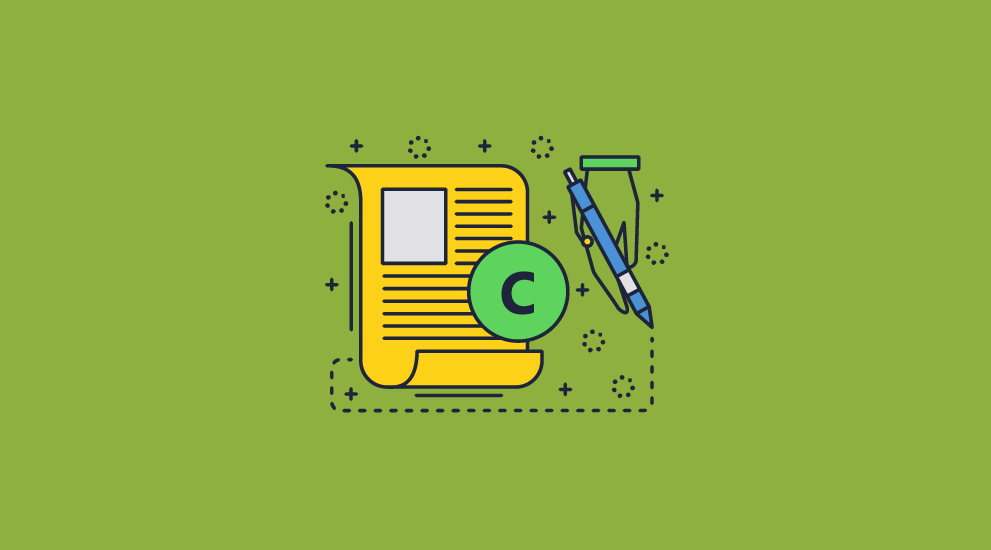
Copyright registration acts as a record that you hold the rights to a particular work. It usually involves submitting an online application form to a relevant government body. You need to send a copy of your work to the copyright office and pay a filing fee ($35 in the US).
If you want to maximize your international copyright protections, you may want to consider registering your work with the copyright offices in each country where you plan to do business. In this case, there are a number of international organizations and treaties that can help protect your work. For example, the World Intellectual Property Organization (WIPO) offers a range of services related to intellectual property protection, including registration and dispute resolution.
 What does copyright registration achieve?
What does copyright registration achieve?
In most countries, you gain basic copyright protections by default. You can send DMCA takedown notices to try to get the content removed. However, in the US (and some other countries), you must register your copyright with a relevant authority to be able to file a lawsuit for copyright infringement.
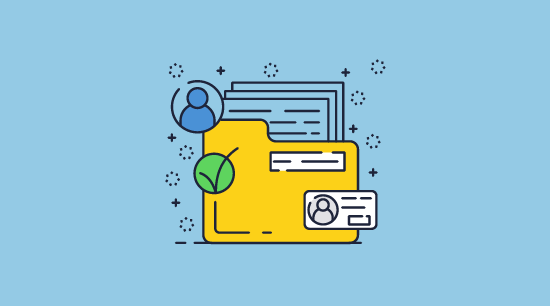
Can I register my copyright after an infringement has taken place?
When you registered your copyright is important. If you did not register the copyright before the work was infringed, or (if the work was published) within three months of publication, your options for remuneration are significantly limited.
The main restriction if you did not register your copyright in advance is that you can only sue for damages and not statutory damages. You will have to present proof of the alleged infringer’s gross revenue and the infringer will have to prove their deductible expenses etc. In most cases, it is very difficult to prove the exact extent that a copyright infringement has harmed you. It will also be harder to prove that the copyright is yours.
As the legal fees involved in copyright lawsuits are usually high and it is difficult to get significant remuneration, many cases without prior copyright registration end with the victim ultimately losing money. In extreme cases, a supreme court may have to decide. For example, in May 2023 the US Supreme Court ruled Andy Warhol’s painting of the singer Prince infringed on the copyright of the original photographer’s work.
If you registered your copyright before the infringement you can sue for statutory damages. Statutory damages are pre-established within the law rather than determined by your calculations. This typically leads to a better monetary outcome when paired with the fact that those with prior registration can be awarded remuneration for attorneys’ fees.
Naturally, prior copyright registration also makes it clear who the owner of a work is and that the copyright is valid, which makes the case more likely to succeed.
What is a copyright notice?
A copyright notice informs users who is the copyright owner of a particular work or collection of works. This can help to deter users and also makes it easier for users to get in contact with you to discuss licensing your work. It is not the same as copyright registration and does not grant you any additional legal rights. However, it may make it harder for the alleged infringer to claim that they thought the piece was in the public domain.
 Fair use: what is not protected by copyright?
Fair use: what is not protected by copyright?
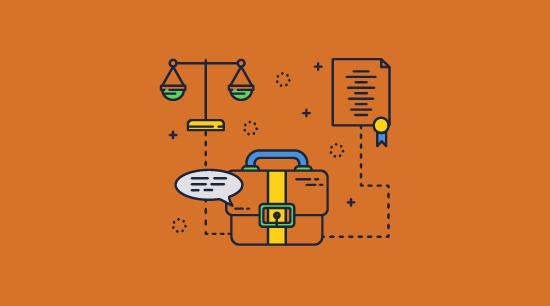
There are limitations to the rights mentioned above. More specifically, you must consider “fair use”. Fair use allows people to use your copyrighted material without permission under limited circumstances.
Fair use exemptions generally fall into four categories: criticism and commentary; news reporting; teaching, scholarship and research; and parody. Essentially, fair use allows for some limited use of copyrighted material for purposes deemed important to democracy or innovation.
The four main pillars of fair use are:
- Purpose and character: Is the work being used in a non-profit, educational, parodic, or non-commercial setting? How much has the work been transformed when compared to the original and does it have the same purpose or character?
- Nature of the copyrighted work: Is the work used highly creative or more factual (i.e. a technical article or news article). Is the work published or not?
- Quantity and quality: How much of the work has been used? Is the excerpt used a core part of the text/image?
- Effects of use: Does the use of the copyrighted content hurt the value of the original work or would widespread use in this manner cause substantial harm to the market?
These factors are not a checklist – they are considered by the courts together rather than individually. For example, if an entire factual work is being distributed for free in an educational setting with no transformation, it may not be considered fair use. However, if a teacher wants to use a portion of a copyrighted book in a lesson, they may be able to do so under the fair use doctrine. They may also be able to use the entire work may if the other factors are in its favor (i.e. it has been transformed substantially, it does not hurt the author/publisher).
 Copyright infringement or fair use?
Copyright infringement or fair use?

The key difference between fair use and copyright infringement is the purpose and nature of the use. If you are using someone else’s copyrighted material for your own profit or dissemination, it’s likely to be considered infringement. If you are using the material for criticism or commentary, it may be considered fair use.
For example, if a company uses a copyrighted image in an advertisement without obtaining permission from the copyright owner, that would likely be considered infringement. On the other hand, if a blogger uses a portion of a copyrighted article in a blog post to criticize or comment on the article, that may be considered fair use.
Other examples of fair use could include using a quote from a book in a book review, using a clip from a movie in a news report, using a photograph in a presentation as part of an educational lesson or a parody of an original work.
It is important to note that just because a work is in the public domain does not mean that all uses of that work are legal. For example, using a public domain image in a way that implies endorsement by the original creator may still be a violation of the creator’s rights of publicity.
Whether or not a case is fair use or copyright infringement can only be decided by the courts.
Naturally, a work that is in the public domain is also not protected by copyright. It also does not protect derivative works.
 Where copyright law can’t help you
Where copyright law can’t help you
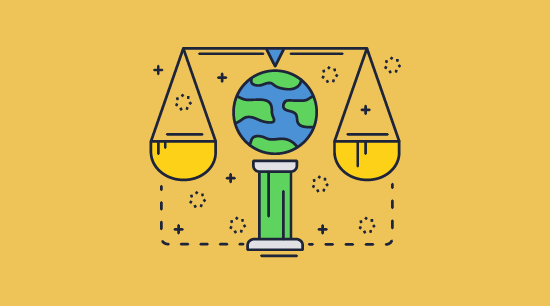
It is good to have these legal tools at your disposal, and that is why we would always recommend registering your copyright where possible. However, as you may have noticed by the millions of albums, ebooks, and movies available on piracy sites, the law isn’t everything.
In certain situations, copyright may not be of any use to you at all:
- If the party/web host distributing your content is in a country that is not a signatory to the Berne Convention or Universal Copyright Convention, then there is nothing you can do. Piracy sites can easily take advantage of this by intentionally hosting content in non-member countries. The Berne convention is also not adapted to the modern age and internet service providers (ISP) may not be able to be compelled to remove content as a result.
- Once your work is out there, it can be mirrored to dozens of other sites, and it is practically impossible to sue them all.
- If the copyrighted material is being shared within a closed system, you probably won’t have heard about it in the first place. In cases where you have heard of it, it will be difficult to prove.
As a result, the best thing you can do to protect your creative work is to implement measures that prevent unauthorized viewing, copying, and distribution in the first place. Physical works already have natural protection from this, as the logistics and economics of copying a piece en masse rarely make it worth it. For digital works, however, where files can be copied infinitely and at will, a technical solution is required. This is because while the DMCA or Digital Millennium Copyright Act should help protect against this, it fails woefully short.
 How Digital Rights Management enforces copyright protection
How Digital Rights Management enforces copyright protection
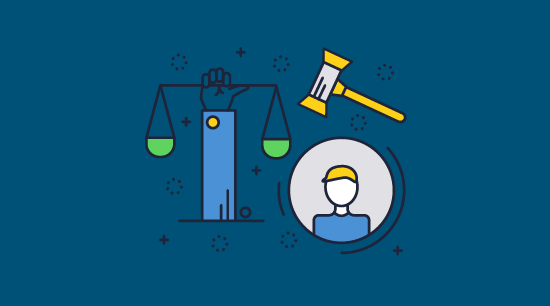
Digital rights management (DRM) software and services are specifically designed to allow copyright holders to prevent the misuse of their work on computers and other devices. DRM exists for most types of creative work, including music, video games, ebooks/documents, sheet music, etc. It helps to prevent you from having to take legal action by preventing infringement in the first place.
However, DRM is not always effective. Preventing the use and misuse of files in a digital format without seriously compromising the user experience is difficult. This is particularly true when potentially hundreds of pirates are actively working to break it.
Let’s take ebook DRM as an example. The major ebook DRMs are provided by storefronts, and there is no strong effort to prevent infringement. They are far more effective at locking genuine users to their platform and devices than they are at stopping piracy, of which Kindle DRM is a good example. In fact, all major storefront DRMs can be removed in a matter of seconds.
It is important then to do your research regarding DRM solutions rather than blindy following vague marketing copy. DRM must be implemented well and backed by strong encryption to be effective. A strong DRM system will do more for you than copyright registration ever will – but a bad DRM system will only lead to a false sense of security.
 Protecting your copyright with Locklizard DRM
Protecting your copyright with Locklizard DRM
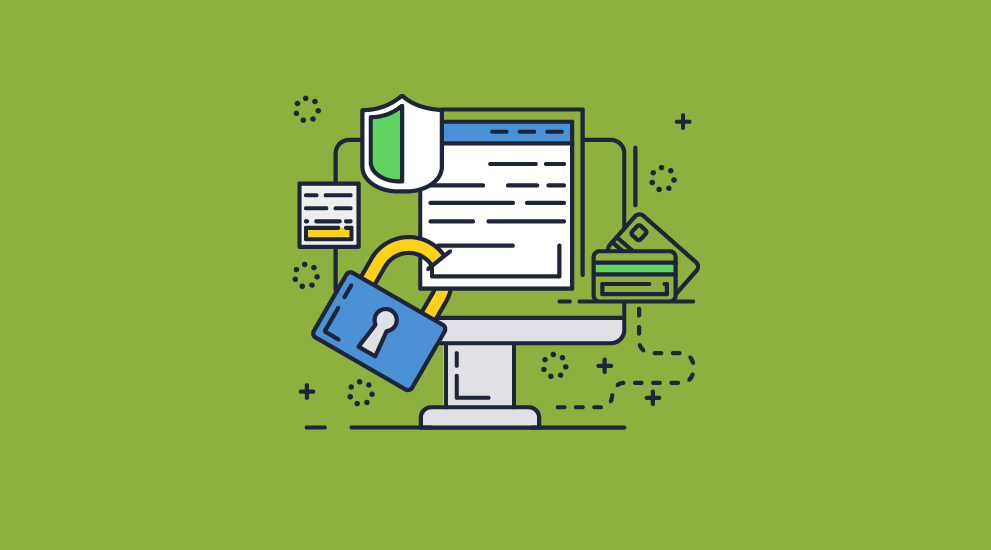
Locklizard DRM offers an alternative to popular ebook and document DRM systems for those publishing ebooks, sheet music, engineering documentation, etc. Locklizard protects documents in PDF format using a combination of transparent licensing, strong encryption, and a secure viewer application. In doing so it is able to effectively lock documents to authorized devices without compromising the user experience.
Locklizard allows you to:
- Stop copy and pasting and editing
- Stop printing or control printing
- Prevent printscreen and third-party screenshot applications
- Expire documents after a certain date or limited time
- Revoke documents and users manually regardless of where they are located
- Apply dynamic watermarks to digital and printed copies – display the user’s name without needing to individually customize watermark text
- Lock use to specific countries and locations
- Track who is printing and viewing your documents, when, and where from
In combination, these irremovable controls protect your intellectual property from unauthorized copying, distribution, and reproduction. They reduce the need for stressful and costly legal action by preventing copyright infringement from happening in the first place.
Take a 15-day free trial of our DRM software to see how Locklizard can protect your copyright while preventing piracy and other misuses.
 FAQs
FAQs
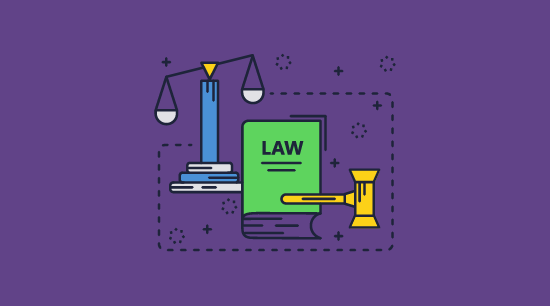
What is the Copyright Act?
The Copyright, Designs and Patents Act 1988 gives the author or creator the exclusive right to copy, adapt, communicate, lend or sell copies of the work, although this right can be sold or transferred.
What works are protected by copyright?
Copyright protects fixed original works, including: a literary work, musical work, dramatic work, an artistic work, an audiovisual work, and an architectural work. It does not protect concepts, methods, ideas, and methods of operation.
Is my screenplay protected by copyright law?
Provided your screenplay is an original work of authorship and is fixed in a tangible medium (i.e. written down or recorded), then yes, it will be protected by copyright law.
Can ideas be copyrighted?
Many people mistakenly believe that they can copyright an idea. However, copyright law only protects the expression of ideas, not the ideas themselves. This means that while you cannot copyright an idea, you can copyright your written or visual expression of that idea.
For example, if you have an idea for a novel or literary work, you cannot copyright the idea itself. However, once you write the novel or literary work, you can copyright the written expression of that idea.
Are recipes protected by copyright?
Usually, no. While recipes seemingly meet many of the requirements for copyright, both the US copyright office and the courts have found that they are not copyrightable. This is for several reasons:
- The idea-expression dichotomy – i.e. the idea itself is too intertwined with the expression of the idea, leading to there being very few ways to express it.
- Lists of ingredients are not copyrightable, as they are seen as factual statements rather than creative expressions. The same can be said for the recipe method, which includes instructions, which are also not copyrightable.
That said, there are elements of a recipe book that can be protected by copyright under certain circumstances. For this to be valid, the recipe must be accompanied by substantial literary expression. For example, in-depth explanations, personal stories, and anecdotes, etc. It could also be considered copyrightable if the author of the work is creative in their description or the process connected to the ingredients (through song for example).
In these cases, it is still not the ingredients list or processes themselves that are protected. A person could still take the list of ingredients and process and publish it without repercussion. They just would not be able to express it in the same way.
Can I copyright a sound recording?
Yes, a sound recording counts as a “fixed” protected work and therefore can be copyrighted. However, you must fulfil the other requirements for copyright ownership. That is, it must be an original work, minimally creative, and not be created on behalf of someone else. For example, original musical compositions that are not derivative work would be protected.
How do you avoid copyright infringement?
The only way to definitively avoid copyright infringement is by obtaining permission to use copyrighted material from the copyright holder. Getting an agreement from the copyright owner for reproduction may also include paying a license fee. Alternatively, you could pay for transfer of ownership and become the copyright owner yourself. If you decide on this route then you should check the validity of the copyright first. Outside of that, the best way to avoid copyright infringement is by gaining a strong understanding of fair use and where it is applicable.
What’s the difference between copyright & privacy?
Copyright protects the holder’s rights in regard to the work, while privacy rights protect the interest of the person (if present) who is the subject of that work. This can cause conflicts, for instance, if an advertiser purchases a license to use a copyrighted work from a photographer who does not have a professional relationship with the subject.
What’s the difference between a Patent, Copyright, and Trademark?
- a patent protects inventors works – new inventions, processes, scientific creations
- a trademark protects brands, logos, slogans
- copyright protects original works of authorship – for example, ebook copyright
When can I use copyrighted material?
You can use copyrighted material when you have an agreement with the rights holder or meet the requirements for fair use, which include purpose and character, nature of the copyrighted work, quantity and quality, and effects of use.
What is the duration of copyright protection?
The duration of copyright protection varies by country. In the United States, it is:
- The life of the author plus 70 years
Or, if the work is published anonymously or pseudonymously:
- 120 years from creation or 95 years from publication
After this period, it typically enters the public domain, though there are some exceptions to this.
What is the copyright law in the United States?
The United States has some of the strongest copyright laws in the world, offering extensive protections for creators. In addition to protecting original works of authorship, U.S. copyright law also covers related rights such as performance rights and sound recording rights.
The Copyright Act of 1976, provides the basic framework for the current copyright law. Under the Copyright Clause, Congress has the power “To promote the Progress of Science and useful Arts, by securing for limited Times to Authors and Inventors the exclusive Right to their respective Writings and Discoveries”.
Do you need a copyright with the year in the footer?
No, you do not need a copyright symbol or year in the footer of your website or document for copyright to apply. However, it does send a clear signal to potential infringers that you are aware of your rights and willing to enforce them.
Can computer software or computer program gain copyright?
You gain copyright over your computer code has copyright as soon as it is fixed in a tangible medium of expression, provided it meets the other criteria for copyright. However, as copyright does not protect the underlying idea of the work, only the expression of it, it may be smart to consider patents.

 What is copyright and what does copyright protect?
What is copyright and what does copyright protect? What is the purpose of copyright?
What is the purpose of copyright? How long does copyright protection last?
How long does copyright protection last? What is copyright registration?
What is copyright registration? What does copyright registration achieve?
What does copyright registration achieve? Fair use: what is not protected by copyright?
Fair use: what is not protected by copyright? Copyright infringement or fair use?
Copyright infringement or fair use? Where copyright law can’t help you
Where copyright law can’t help you How Digital Rights Management enforces copyright protection
How Digital Rights Management enforces copyright protection Protecting your copyright with Locklizard DRM
Protecting your copyright with Locklizard DRM FAQs
FAQs